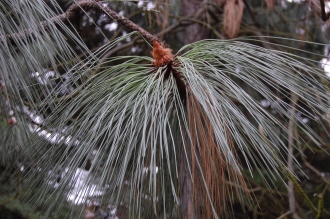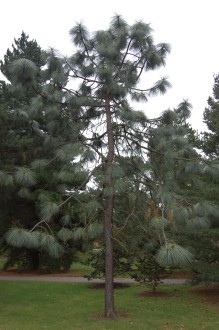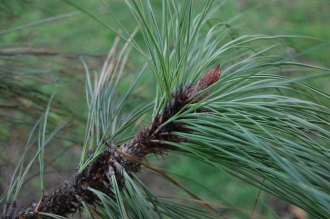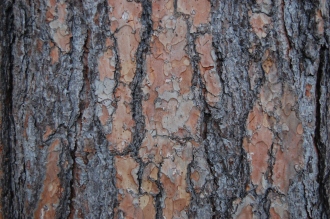Position: Full sun (some shade when young)
Flowering period: Spring
Soil: Moist, well drained
Eventual Height: 25m
Eventual Spread: 12 m
Hardiness: 8a – 10b
Family: Pinaceae
Pinus engelmannii is a medium sized, upright, evergreen tree with a rounded open crown. Its dull green leaves are needle like, up to 40cm long, clustered in bundles of 3 (occasionally 4 or 5) and often drooping near the ends of twigs. The branches of the tree are sparse and very stout, giving the tree a distinct appearance. The trunk is straight, tall and often naked and may achieve a diameter of up to 80cm. The young bark is a dark gray/ brown, becoming a furrowed red/ brown with age. The flowers of the plant are monoecious. The males pollen cones are yellow/ brown, cylindrical, appearing in clusters at the ends of twigs. The female cones are initially small and reddish appearing at the branch tips, maturing after 2 years to glossy brown cones which are up to 16cm long. These appear in groups of 2 or 4.
Pinus engelmannii, commonly known as Apache pine and Western Yellow Pine, is native to southern USA and Mexico. The Apache name refers to the species occurrence in the lands of the Apache Native Americans. Pinus engelmannii was formally known as Pinus ponderos var. mayriana.
The etymological root of the binomial name Pinus is derived from an Ancient Classical name for a Pine Tree. Engelmannii is named after the pioneering American botanist George Engelmann (1809-1884) who discovered the species in 1848.
The landscape architect may find Pinus engelmannii useful as an upright evergreen specimen tree. The young trees are attractive as the elegant needles can be seen and appreciated. The mature trees are impressive for their long, strait branch free stem. Once established this tree is drought tolerant.
Ecologically, Pinus engelmannii is of little ecological value to UK wildlife.
Pinus engelmannii prefers moist, fertile, well-drained soils. It tolerates most pH of soil.
Pinus engelmannii requires little maintenance.









